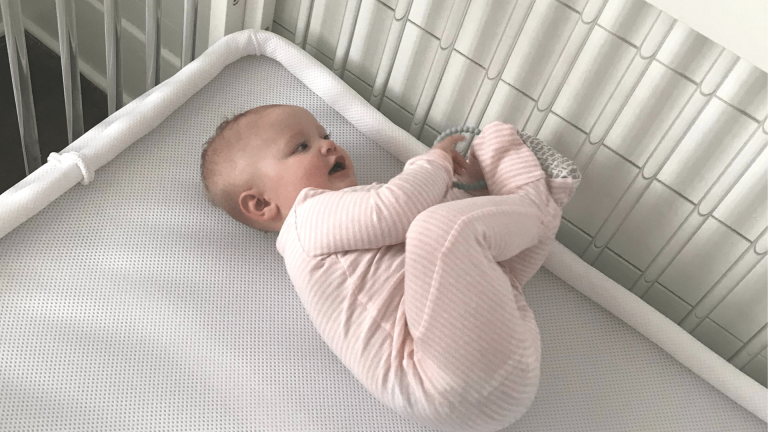How to Put a Crib Together?A Step-by-Step Guide
Preparing for the arrival of a new baby involves numerous tasks, one of which is assembling a crib. This crucial step ensures the baby’s safety and comfort during sleep.
In this article, we will guide you through the process of putting a crib together, providing detailed instructions and safety precautions. By following these step-by-step guidelines, you can create a secure and cozy environment for your little one.
Stay tuned for an efficient and hassle-free crib assembly experience.
Preparing and Inspecting the Crib
Before beginning the assembly process, it is crucial to properly prepare and inspect the crib using the following steps:
- Unpack the crib and check for all necessary pieces. Ensure that the headboard, footboard, rails, and springs are present.
- Gather the required tools, such as a screwdriver, wrench, and nuts and bolts.
- Inspect the condition of the crib pieces for any damage or safety concerns. Check for sharp edges, loose bolts, and corners that can catch on clothing.
- Verify that all pieces listed in the instructions are present. Ensure that the crib meets safety requirements, such as slat spacing and no lead or peeling paint.
Assembling the Crib
To assemble the crib, begin by laying the headboard flat on the ground and attaching the latch brackets to the inside. Ensure that the brackets face the inside of the crib and are securely attached.
Next, insert a dowel through the head and footboards on one side of the crib and slide it through the holes in the latch brackets. Screw the dowel into place on the ground and tighten the screws to prevent shaking.
Then, screw the attachment pieces onto the metal springs and attach the metal springs to the wooden crib head and footboards. Use a wrench, nuts, and bolts for secure attachment.
Double-check the stability of the mattress support and attach the drop side rail to the front of the crib. Stand the drop rail onto the latch brackets and insert a metal rod through the holes in the crib to secure the drop rail.
Safety Precautions and Tips
Ensure the crib meets safety standards by following these important precautions and tips.
- Always follow the manufacturer’s instructions carefully during assembly.
- Use the provided screws and bolts to secure all parts of the crib.
- Regularly check for any sharp edges or loose bolts that may pose a safety risk.
- Avoid using crib bumpers or loose bedding, as they can increase the risk of suffocation.
- Ensure that the slat spacing is appropriate to prevent the baby from getting their head stuck between the slats.
Avoid using cribs with drop sides, as they have been recalled due to safety concerns. Stay updated on crib recalls through the Consumer Product Safety Commission website. Contact the manufacturer for replacement parts if needed.
- Place the crib away from windows, cords, curtains, or any other potential hazards.
- Always supervise the baby while they are in the crib to ensure their safety.
Additional Steps and Considerations
Continuing the discussion, it is important to consider additional steps and considerations when assembling a crib. These steps will ensure the crib is properly assembled and safe for use.
- Attaching wheels (if applicable): Some cribs come with wheels for easy mobility. Carefully attach the wheels to the crib legs according to the manufacturer’s instructions.
- Proper bedding and crib usage guidelines: It is essential to follow safe sleeping practices for infants. Use a firm mattress that fits snugly in the crib with a fitted sheet. Avoid using pillows, loose bedding, or crib bumpers, as they can pose suffocation hazards.
- Tips for efficient assembly: To streamline the assembly process, read the instructions thoroughly before beginning. Lay out all the necessary tools and parts in an organized manner. Take breaks when needed to stay focused and avoid rushing the assembly.
Safety Warnings and Recalls
Moving on to safety concerns, it is essential to be aware of potential hazards and recalls associated with cribs. To ensure the safety of your baby, regularly check for loose bolts, sharp edges, and proper functioning of the drop rail.
Stay updated on crib recalls through the Consumer Product Safety Commission website and avoid using cribs with drop sides, as they have been recalled.
It is important to follow the manufacturer’s instructions carefully and use the provided screws and bolts to secure all parts. Regularly check for sharp edges or loose bolts and avoid using crib bumpers or loose bedding.
If any replacement parts are needed, contact the manufacturer for assistance. Taking these precautions will help provide a safe sleeping environment for your baby.
Conclusion
Putting a crib together is a crucial task for parents and caregivers to ensure a safe and comfortable sleeping space for their babies.
By carefully inspecting the crib, following step-by-step assembly instructions, and adhering to safety precautions, parents can create a secure environment for their children.
Regular checks for sharp edges or loose bolts, avoiding crib bumpers and loose bedding, and staying updated on safety warnings and recalls are essential for maintaining the crib’s safety.
Following these guidelines will help parents successfully assemble a crib and provide a nurturing space for their baby.

